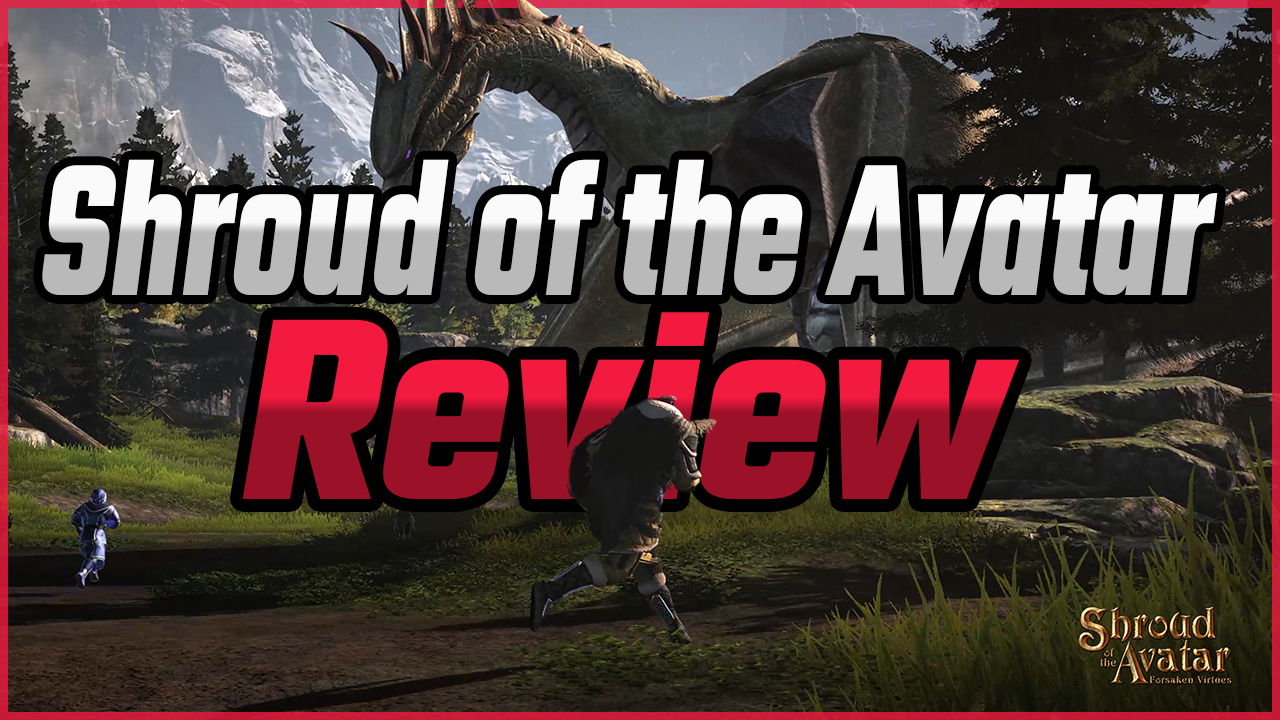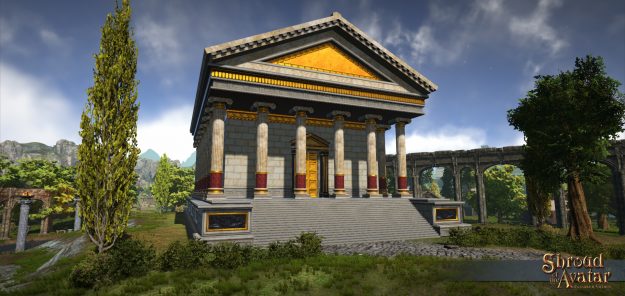Shroud Of The Avatar: Forsaken Virtues – Is SOTA Worth Playing in 2023?
Shroud of the Avatar: Forsaken Virtues by Catnip Games, formerly Portalarium, is an MMORPG, a misunderstood multiplayer online/offline RPG. We will get to this awkward definition in a moment.
In the early 2010s, MMORPGs were all the rage. Seduced by World of Warcraft’s success, several gaming companies – new and veteran alike – set out to make their own MMOs destined to take down WoW.
With Richard Garriott, the creator of Ultima Online and a respected name in the gaming community, at the helm, the 2013 Shroud of the Avatar announcement caught the players’ attention.
The advertisement presented SotA as a spiritual successor to Ultima Online. It boasted an innovative concept that would fuse single-player with multiplayer. SotA came to be misguidedly labeled as an MMO.
In the long run, that would be the least of the issues. Fast forward to 2018, when the game was released to everyone’s disappointment. We’re not here to bash the developers for not keeping their promises, nor compare it to Ultima Online. That has already been done. Years have passed and the game has changed. We believe that it deserves a fresh look untainted by the sins of the past.
Gameplay
Game Start and Character Creation in Shroud of the Avatar
There are two options. Play SotA through Steam or download it directly from the official game website. Either way, the download is fast.
A peculiar choice for a game known as an MMO greets us: Play Online or Play Offline. Yes, SotA offers a single-player offline mode that allows you to experience the available content without meeting a single soul. It’s worth mentioning that offline and online characters are separate.
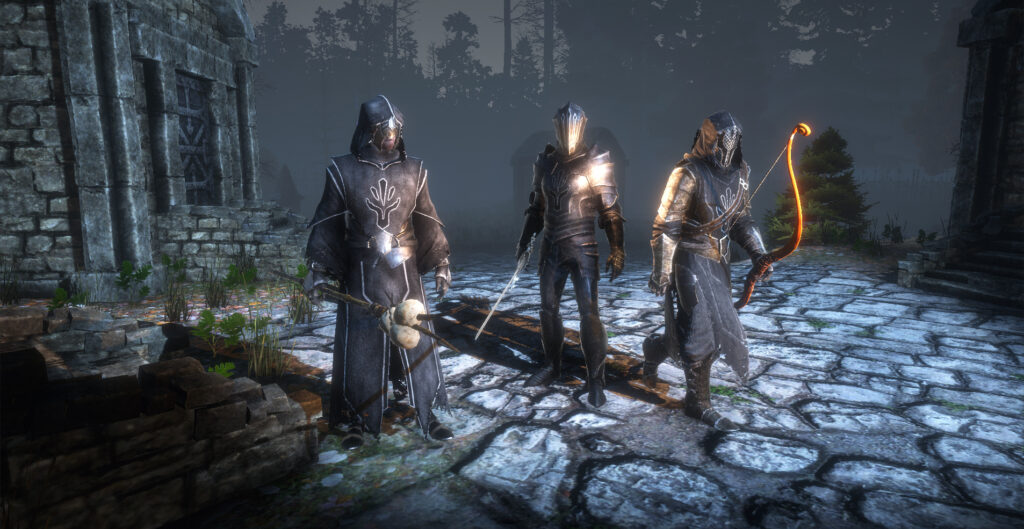
We opted for the online option. The character creation system is decent. You can choose between male or female body types. Several customization options to tweak the visage, hair color, and hairstyles are available. Nothing fancy here, maybe the generous tattoo selection.
Decide how you want to be called, find an alternative name because the first choice is probably taken, and off you go!
First Steps and Questing in New Britannia
All Avatars spawn into the newbie zone, an unwelcoming area considering the flames and all the pesky undeads. Quick introductions to walking and combat follow. The narrative is wanting at this point. You have to get out of this area because of fire and zombies. Duh!
You leave this rather boring uninviting zone pretty quickly and arrive at what is the first quest hub for new players. It becomes rapidly clear that Shroud of the Avatar is not your run-of-the-mill MMORPG. Old-school sorcery is at play here.
Conversing with NPCs requires attention. Throughout the dialogue lines, you will notice highlighted keywords. Clicking on the keywords is how you discover clues, unlock quests, learn emotes, and find out bits of interest. It’s a nice system as it appeals to one’s sense of discovery.
However, it has a few caveats. For example, notable NPCs are not marked in any way, so you would have to engage in conversation with them all, and not all have something interesting to say. If you do not ask for the name, their nameplate will simply say something general, such as Citizen. It’s a bit silly when an NPC greets you with “Hello, I’m X and I run the tavern!” and you still have to click “name” to learn the appellation their mama gave them and “job” to find out what they are doing for a living.
Another tiresome aspect is that the information becomes repetitive. You select a keyword hoping to find out something new and you hear the same thing all over again.
Questing in Shroud of the Avatar is another feature reminiscent of the games of yore. When you discover a hint about a task, the quest log dutifully records it. Map markers guide the way, but this is not the go-to method of uncovering quest locations. You will have to check the journal.
SotA is not the kind of game where you mindlessly click accept, go to the marked location, kill mobs, gather acorns, and return for the reward. Solving quests involves reading the journal, looking for clues, and making decisions.
Turning in quest items is a manual process. You must find the item in your bags and drag it into the trade window.
Quests may have different endings. It’s up to you which path you take. Now, don’t expect a complex network of quest choices similar to notable single-player RPGs, but it’s nice to have some freedom of choice. Or the illusion of it at least, as not all quest endings have an impact on your Avatar’s development. More on freedom up next when we talk about the character system.
Character Development and Combat in Shroud of the Avatar
You might have noticed we didn’t mention anything about selecting a class when creating a new character. That’s because SotA doesn’t have classes. It has skill-based character customization. We have two main skill categories: Adventuring and Crafting.
Adventuring has three sub-categories: Combat, Magic, and Strategy. Combat skills include weapons and armor skills. Magic skills refer to spells. Strategy skills present the option to be a Bard or tame creatures, for example.
The Crafting skills are about gathering materials and creating items. The three main sub-categories are Gathering, Refining, and Production.
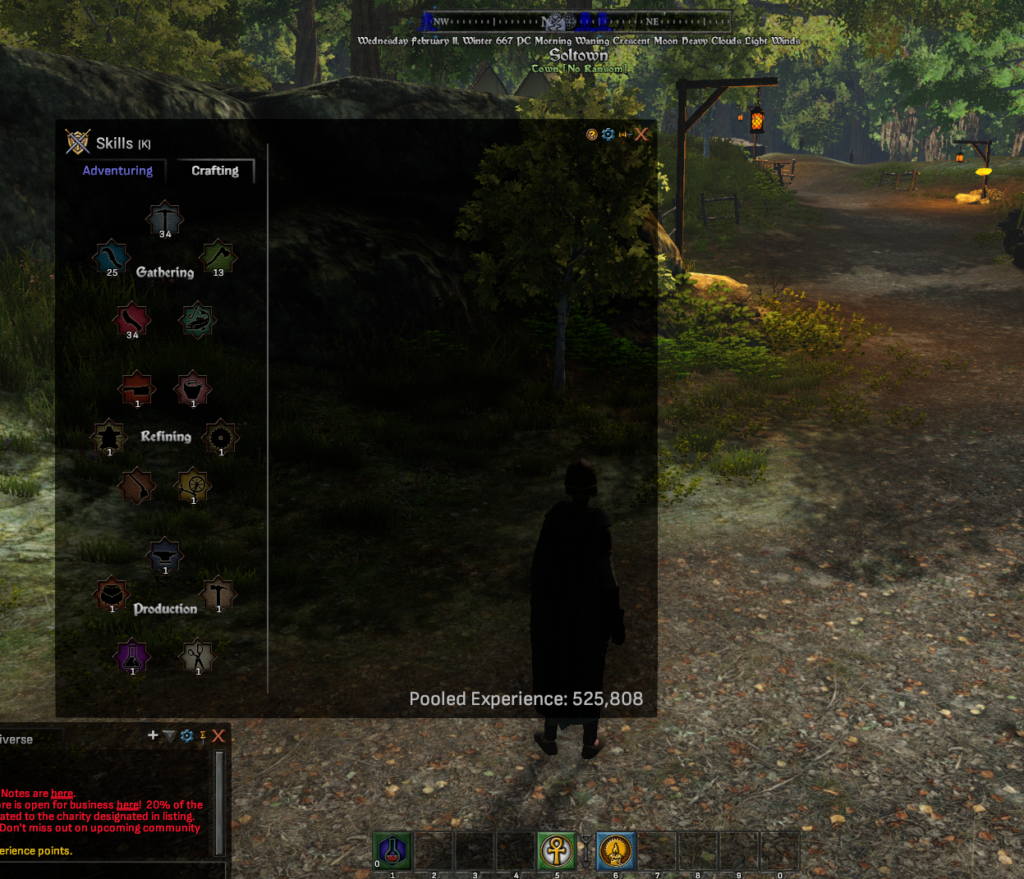
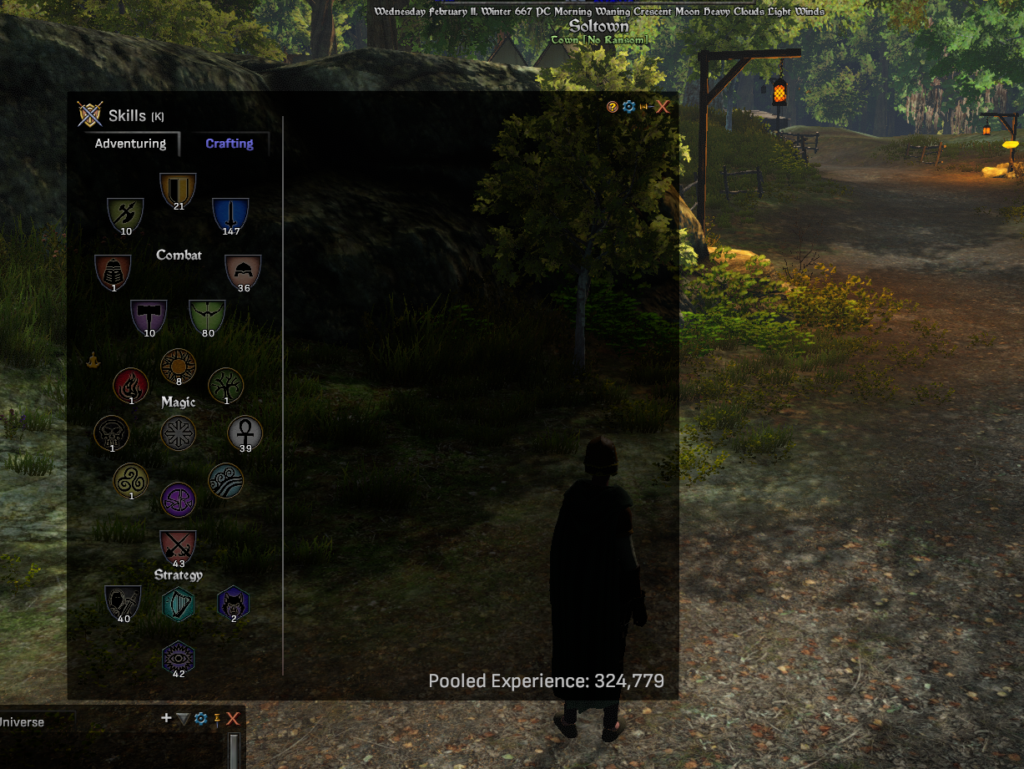
Each skill has its own tree with active abilities named glyphs and passive abilities. To be able to use a skill, you must first unlock it at the trainer by spending gold, the in-game currency you obtain from rewards and selling items. Skills are freely combined into custom decks that define one’s combat style. Think of them as specializations that allow you to create unique classes.
At this point, you might be wondering about skill balance in SotA. Like in most multiplayer games, skill balance is a delicate issue. Some skills are more powerful and not all decks will be viable. You can experiment with your own deck or look for a guide.
We recommend the first option. SotA is not a game that relies on meta and cookie-cutter specs and all that. As long as you are having fun and the mobs expire before you do, skill choice should not matter.
The lack of an XP bar is another of SotA’s characteristics. XP comes from killing mobs and quests. It goes into a shared pool. Two pools actually, one for Adventuring skills and another for Crafting skills. Using trained skills consumes XP. Skills grow in level when you use them.
For example, if your heart’s desire is to be proficient with a bow, you use the Ranged skill. The same goes for swords, defense, or gathering skills. The more you use them, the faster they level up. If you wish to unlearn a skill, the option Forget allows you to decrease the skill level and regain some XP. You can manually cap a skill if you do not wish to level it up anymore. There is no limit to the number of skills you can learn and advance.
You can train all the weapon skills, acquire all spells, and become an expert in all arts and crafts. While theoretically possible, hitting the 200 hard skill cap takes an insane amount of time. That’s why most players aim for 125, the soft cap. Past that number, it takes much more XP to level up. Players consider the time investment not worth it, so the general advice is to work on other skills. SotA characters have an Adventurer Level that determines the difficulty of the PvE combat encounters.
To enter combat mode, you must draw your weapon by pressing Z. Even if you don’t use weapons, you need to be in combat mode to use certain spells.
Shroud of the Avatar has two combat modes, auto and free. In auto mode, you will automatically attack any in-range enemy. In free mode, you must click to attack. This mode allows for more strategic attacks. You can charge a strike and release it at the optimal time for a better effect.
In both modes, combat is target-based. In addition to weapon attacks, you will use abilities and spells. As a side note, it’s better to concentrate on a combat style and use a few abilities at a time, rather than cycling through multiple skills. This will allow new characters to master skills faster. Combat itself is far from spectacular. Some animations and effects play out when you fight, but don’t expect showy spell casting or flamboyant swordsmanship.
Shroud of the Avatar – End Game Content and PvP
The main game activities are questing, exploration, and crafting. SotA has an open-ended sandbox end game. In the beginning, we mentioned that Shroud of the Avatar is a misunderstood RPG. T
hat’s because it lacks the usual MMO PvE activities. There are no designated group quests, dungeons, and raids. The loot rush that drives most MMO players these days hasn’t taken over New Britannia. Shroud of the Avatar is a single or multiplayer game that sends you on a journey to recover Virtues and Principles. These are concepts borrowed from the Ultima series. If you are not familiar with them, don’t worry. You’ll catch on fast.
The better part of the PvE content is story-driven. The game has no shortage of missions for young Avatars to complete. Although you can quest with a buddy, this part of SotA feels like it was intended as a single-player experience. If the mobs are too hot to handle, come back with better equipment or a more suited deck.
As players explore New Britannia, they gain knowledge about this world and strengthen their skills. The map doesn’t have markers telling where the points of interest are. Sometimes, you will discover a new location while working on a quest.
Other times, an NPC will reveal an area worth exploring. Keep your eyes peeled for any info and don’t be afraid to interact with the environment. You never know what might lay under a loose stone. Most players will probably pay no attention to crafting in the beginning but, eventually, this part of the gameplay will win you over.
Avatars spawn into the world with all the necessary tools to extract resources. You can gather mats from the start of your journey.
Shroud of the Avatar has an inventory system based on item weight. When you become encumbered, you suffer stat penalties. Use the bank to store items for which you have no immediate use. You can buy more bank slots using gold.
Player housing is another big part of the game. You can have your own home and decorate it to your taste. The PvP options include open world, arenas, and duels. You will find a few PvPers here and there, but the community isn’t that interested in this side of the game.
Shroud of the Avatar – Graphics and Worldbuilding
Let’s be blunt about it. The visuals are wanting and not just because of the aged graphics. Even at the time of its release, SOTA’s graphics weren’t a selling point. Other games that came out around that time were far better looking.
A more bothersome thing is that even in 2023, the game still feels unfinished. For example, rooms without a single piece of furniture or a measly decoration are a common sight. The character models and armors look decent. Despite the dated graphics and lack of details, Shroud of the Avatar manages to project an agreeable medieval fantasy atmosphere.
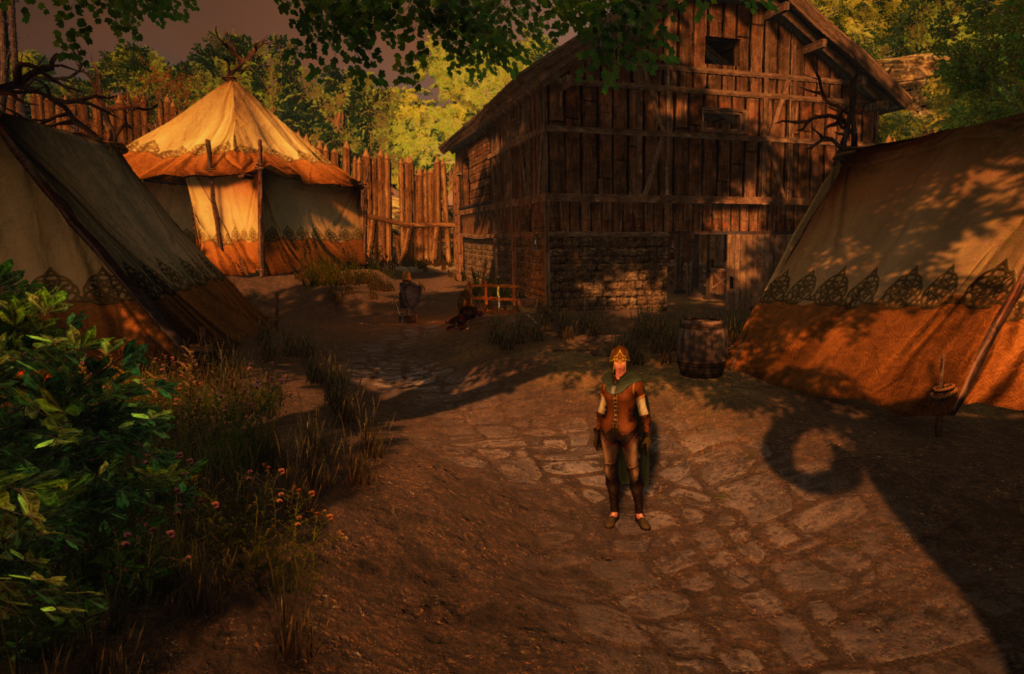
New Britannia’s non-playable residents do a good job of making the world feel more alive. They’ll talk your ear off if you are willing to stay a while and listen. Players unveil their fate in the world as they complete quests. The story delivery is nothing to write home about, but the journey still manages to captivate. It must be that old-school charm working its magic.
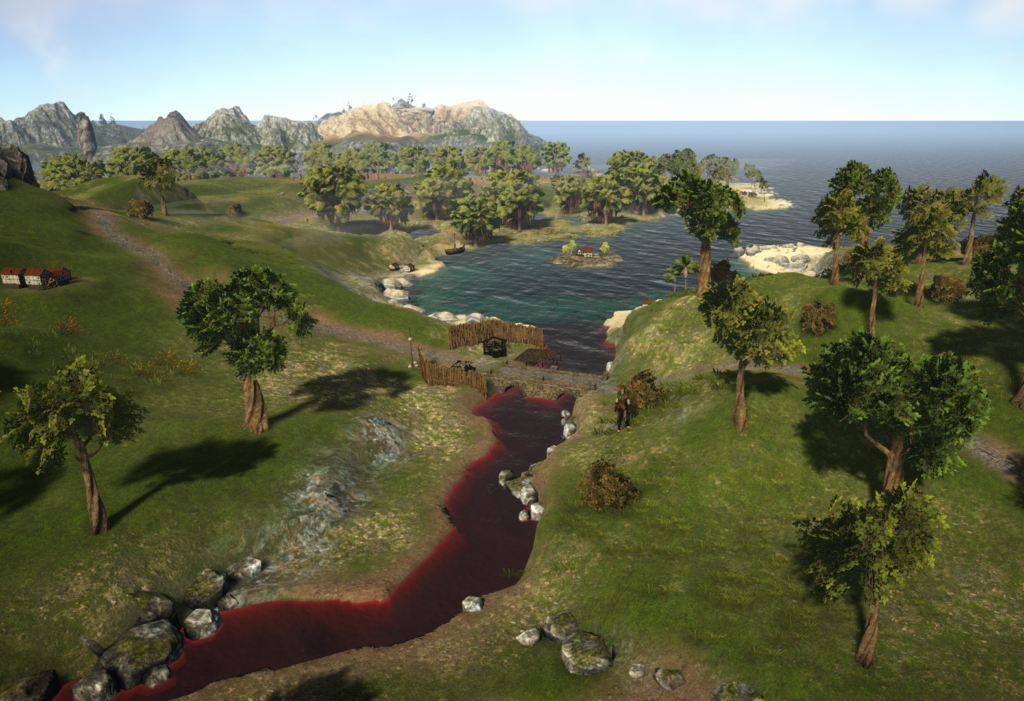
Is Shroud of the Avatar Pay to Win?
You can play the entire game for free. The optional premium subscription costs $9. It gets you several benefits. For $4 you can get 100 extra bank slots. A second character slot is available for purchase from the store. Seeing as you can learn all the skills on one Avatar, there is little reason to have two characters.
Player-owned towns, now that’s an interesting premium add-on. Prices range from a couple of hundred dollars to tens of thousands! Unfortunately, this mechanic doesn’t work out without an active community.
Crowns of the Obsidian, the premium currency, get you a multitude of items including decorations and bank slots. The funny thing is that you can buy Episode 2, a mini-expansion that has been in development for a few years. Buyers beware!
Final Conclusions
Shroud of the Avatar is a single and multiplayer game that caters to those who are not afraid to get their hands dirty. It requires attention, willingness to discover things on your own, and doesn’t serve rewards on a silver platter.
The skill system promotes freedom when designing your Avatar. Even though it offers story-driven quests, the end-game tends to fall in the sandbox category. There are no clear PvE and PvP goals. Crafting and player housing present a world of possibilities.
You can play alone, but there are features, such as player-owned towns, that aren’t much fun without an active player base.
If you are looking for a fully-fledged MMORPG, you can safely move along. If you don’t care about player interaction, Shroud of the Avatar’s old-school charm, interesting character development, and story-driven quests should provide plenty of fun.

